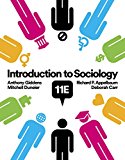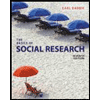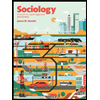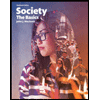
Introduction
In this case, the answer is option (D) Make all sales final.
Explanation of Solution
Correct answer and explanation
Post-decision dissonance occurs after a decision is made, which is typically decreased by increasing the appeal of the chosen alternative and devaluing the rejected alternatives. Contrary to popular belief, keeping options open does not make a person happier. Since the individuals underestimated how uncomfortable dissonance would make them, they did not realize that the finality of the decision would make them happier. Thus, making all sales final with no chance of reevaluating your decision would be the technique most likely to result in an increase in customer satisfaction.
Explanations for incorrect options
Option (A) refers to cutting all prices in half. However, cutting all prices in half would not really help the customer ease their level of dissonance. So, option (a) is incorrect.
Option (B) refers to asking customers to make a radio ad about the greatness of the store. However, this technique would seem to benefit the store more and not really do anything to increase the customer's level of satisfaction. So, option (b) is incorrect.
Option (C) refers to charging a membership fee to shop at the store. However, charging a membership fee would do nothing to ease the customer's level of dissonance. So, option (c) is incorrect.
Therefore, the options (A), (B), and (C) are incorrect.
Want to see more full solutions like this?
Chapter 6 Solutions
Social Psychology, 10th Edition
- What are the constitutional foundations and competing philosophies of economic and social policy?arrow_forwardIs the Constitution’s flexibility a strength in our current polarized environment, or is it starting to create more gridlock than progress?arrow_forwardAfter watching a 15 minute clip by educational YouTuber CGP Grey describing how agriculture, industry and information have changed due to automation, Indicate 3 ways this video could change someones perspective on the future https://www.youtube.com/watch?v=7Pq-S557XQU&t=1sarrow_forward
- 1. What is your attendance attitude? Are there some classes you want to attend all the time and others you would prefer to skip? What is the difference between them? 2. How does the quality of your preparation for class affect your willingness to ask questions and participate in class? 3. Think of times when you have interacted with an instructor. Was the interaction productive? Why? What can you do to improve the results of conversations with instructors and classmates? 4. What do you consider the most important rules of e-mail etiquette? How consistent are you in following them? 5. Have you ever received a grade you did not think you deserved? How did you handle it?arrow_forward1. What are some of the causes of stress you feel before an exam? Do you think you can keep them from affecting your performance negatively? How? 2. Why would scheduling weekly review times for each course be helpful to you? 3. Are there any situations in which a study group doesn't make sense? What might they be? 4. What are your favorite types of exam questions? Why? Which exam questions do find the hardest to answer? Will the strategies that are listed in the chapter help? 5. If you found out one of your classmates was being academically dishonest, what would you do? 6. Explain why it is so important to review returned exams and quizzes and incorporate them into your study guide.arrow_forward1. What has your own experience about reading in college been so far? Is the amount of reading challenging? What have you done to deal with it? 2. How will the material covered in this chapter affect your work in other classes? Which of your courses requires the most reading? How will the techniques from this chapter help you be more efficient? 3. How can you modify your attitude towards a reading assignment you really just don't want to do? 4. How can you minimize "life" interruptions (from family and/or roommates) to your reading time? 5. Think of your most difficult subject. What features of the book can you use to understand the material better? 6. Can you be effective at studying if you don't have good notes from your class and reading assignments? Explain your answer. 7. Think about the times your study time has been interrupted in the past week (or keep a log for this week). What was the nature of those interruptions? How can you avoid them in the future?arrow_forward
- short/humanized answers for each What are some of the historical events that contributed to disability awareness and legislation? How are physical disabilities, health impairments, and multiple disabilities defined, and what is their prevalence? What are some characteristics of children with physical disabilities, health impairments, and multiple disabilities? What challenges are associated with the assessment of children with physical disabilities? What educational responses are needed for students with physical, health, and multiple-complex needs at each intervention tier? What special issues face the families of children with physical disabilities, health impairments, and multiple-complex needs across their life course?arrow_forward1. Think about your last class. How did you prepare yourself to learn? How did you feel in class? Attentive? Bored? Lost? What new ideas were presented? How did you record these ideas? Wrote them down? Just remembered them? Does your understanding of the learning cycle suggest you should make some changes or improve some skills? What would those be? 2. What are some of the bad listening habits you need to work on? Think about both the listening process and your body language. 3. How do you feel about asking questions in class? What idea from the "Now That's A Good Question" box do you think will help you? 4. Describe your ideal study space. How does it differ from where you currently study? 5. What method of note taking do you use? Why? Are there any aspects of your learning style that indicate you should try another? Which one? Why?arrow_forwardWhat makes life truly worth living? Consider different ideas that people suggest such as love, purpose, creativity, relationships, or helping others — and explore how these ideas compare to Socrates’ belief that philosophy and self-examination are essential for a meaningful life. examine the difference between genuine philosophy and sophistry, and how Socrates describes the life of a true philosopher.arrow_forward
- compile a business model that is feasible to access quality education in low income communities in Namibia (a) outline the business model (eg, revenue streams, pricing strategies) (b) explain the feasibility of your solution ( cost, resources, implentation strategy (c) indetify potential risk and mitigation strategiesarrow_forwardDoes the Electoral College still fit into the original vision of balance today?arrow_forward8:46 39° • 42% $0.00 What is the Lizzie McGuire film about? Response Response A The Lizzie McGuire Movie is a 2003 film that serves as a sequel to the Disney Channel series, Lizzie McGuire, about a young girl navigating her early teen years with her family and three best friends, Miranda (played by Hilary Duff) and Gordo (played by Adam Sandler). In the film, the three friends travel to Rome with their classmates after graduating junior high. Lizzie discovers that she is the spitting image of an Italian pop star, and is asked to take her place on stage at the International Music Video Awards alongside the pop star's handsome ex, Paolo. Meanwhile, Gordo must decide whether to confess his feelings for Lizzie, or allow her to live out a pop star fantasy with Paolo. The film stars Hilary Duff as Lizzie, as well as Alex Borstein, Lalaine, Adam Sandler, Jake Thomas, and Yani Gellman. Response B The film based on the Disney Channel series Lizzie McGuire is called The Lizzie McGuire Movie and…arrow_forward
 Social Psychology (10th Edition)SociologyISBN:9780134641287Author:Elliot Aronson, Timothy D. Wilson, Robin M. Akert, Samuel R. SommersPublisher:Pearson College Div
Social Psychology (10th Edition)SociologyISBN:9780134641287Author:Elliot Aronson, Timothy D. Wilson, Robin M. Akert, Samuel R. SommersPublisher:Pearson College Div Introduction to Sociology (Eleventh Edition)SociologyISBN:9780393639407Author:Deborah Carr, Anthony Giddens, Mitchell Duneier, Richard P. AppelbaumPublisher:W. W. Norton & Company
Introduction to Sociology (Eleventh Edition)SociologyISBN:9780393639407Author:Deborah Carr, Anthony Giddens, Mitchell Duneier, Richard P. AppelbaumPublisher:W. W. Norton & Company The Basics of Social Research (MindTap Course Lis...SociologyISBN:9781305503076Author:Earl R. BabbiePublisher:Cengage Learning
The Basics of Social Research (MindTap Course Lis...SociologyISBN:9781305503076Author:Earl R. BabbiePublisher:Cengage Learning Criminalistics: An Introduction to Forensic Scien...SociologyISBN:9780134477596Author:Saferstein, RichardPublisher:PEARSON
Criminalistics: An Introduction to Forensic Scien...SociologyISBN:9780134477596Author:Saferstein, RichardPublisher:PEARSON Sociology: A Down-to-Earth Approach (13th Edition)SociologyISBN:9780134205571Author:James M. HenslinPublisher:PEARSON
Sociology: A Down-to-Earth Approach (13th Edition)SociologyISBN:9780134205571Author:James M. HenslinPublisher:PEARSON Society: The Basics (14th Edition)SociologyISBN:9780134206325Author:John J. MacionisPublisher:PEARSON
Society: The Basics (14th Edition)SociologyISBN:9780134206325Author:John J. MacionisPublisher:PEARSON





